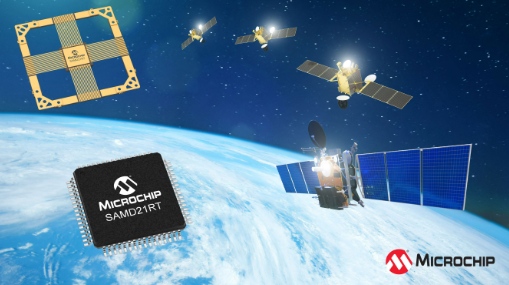Space exploration is entering a period of revival, with a series of exciting new missions unfolding one after another, such as the highly anticipated Artemis II (Artemis II program), the successful landing of JAXA SLIM and Chandararian-3 on the moon, and the new deployment of New Space in low Earth orbit (LEO). Designers need electronic components that meet strict radiation and reliability standards to meet the requirements for working in harsh space environments. Microchip Technology announced the launch of a new radiation resistant 32-bit microcontroller, SAMD21RT. This product is based on Radiation Resistant (RT) Arm ® Cortex ®- M0+technology, using 64 pin ceramic and plastic packaging, with 128 KB flash memory and 16 KB SRAM.
SAMD21RT is designed for space limited applications that require extremely high dimensions and weight, with a substrate area of only 10 mm x 10 mm. SAMD21RT operates at a frequency of up to 48 MHz, providing high-performance processing capabilities for harsh environments. This device integrates analog functions, including up to 20 channels of analog-to-digital converters (ADCs), analog-to-digital converters (DACs), and analog comparators.
.

The SAMD21RT device is based on the existing SAMD21 MCU series widely used in the industrial and automotive markets using Microchip. The device also adopts Commercial Off the Shelf (COTS) technology, which greatly simplifies the design process when transitioning to radiation resistant devices due to maintaining pin compatibility in the design. Microchip provides a comprehensive system solution for space applications, which can design various devices around the SAMD21RT microcontroller, including FPGA, power and discrete devices, memory products, communication interfaces, and various specifications of oscillators.
In order to withstand harsh environments including radiation and extreme temperatures, SAMD21RT can operate in the temperature range of -40 ° C to 125 ° C and has high levels of radiation tolerance, with a total ionizing dose (TID) capacity of up to 50 krad and a single event latch (SEL) immunity of up to 78 MeV.cm ²/ Mg.
Bob Vampola, Vice President of the Aerospace and Defense Business Unit at Microchip, said, "The advantage of working with us is that we have the corresponding history, knowledge, and capabilities to design and test radiation resistant devices within the company. We will continue to introduce new technologies such as Ethernet, artificial intelligence, and machine learning that have developed in the commercial and industrial markets, and improve them using radiation performance to meet the needs of space missions. We will also continue to provide higher computing performance and integrate updated technologies into smaller packages, reducing weight and size."
SAMD21RT has low power consumption and features idle and standby sleep modes as well as sleep walking peripherals. Other peripherals include a 12 channel direct memory access controller (DMAC), a 12 channel event system, various control timers/counters (TCC), a 32-bit real-time counter (RTC), a watchdog timer (WDT), and a USB 2.0 interface. The communication options include serial communication (SERCOM), I2C, SPI, and LIN.
Microchip has tens of thousands of in orbit components and has always been an important part of space exploration history, crucial for today and future space missions. As part of the Artemis program, Microchip's products are en route to the moon and contribute to the successful development of space launch systems, Orion spacecraft, Lunar Portal space station, Lunar lander, and next-generation space suits.
The copyright of this article belongs to the original author. The reprint of the article is only for the purpose of disseminating more information. If the author's information is marked incorrectly, please contact us immediately to modify or delete it. Thank you for your attention!

